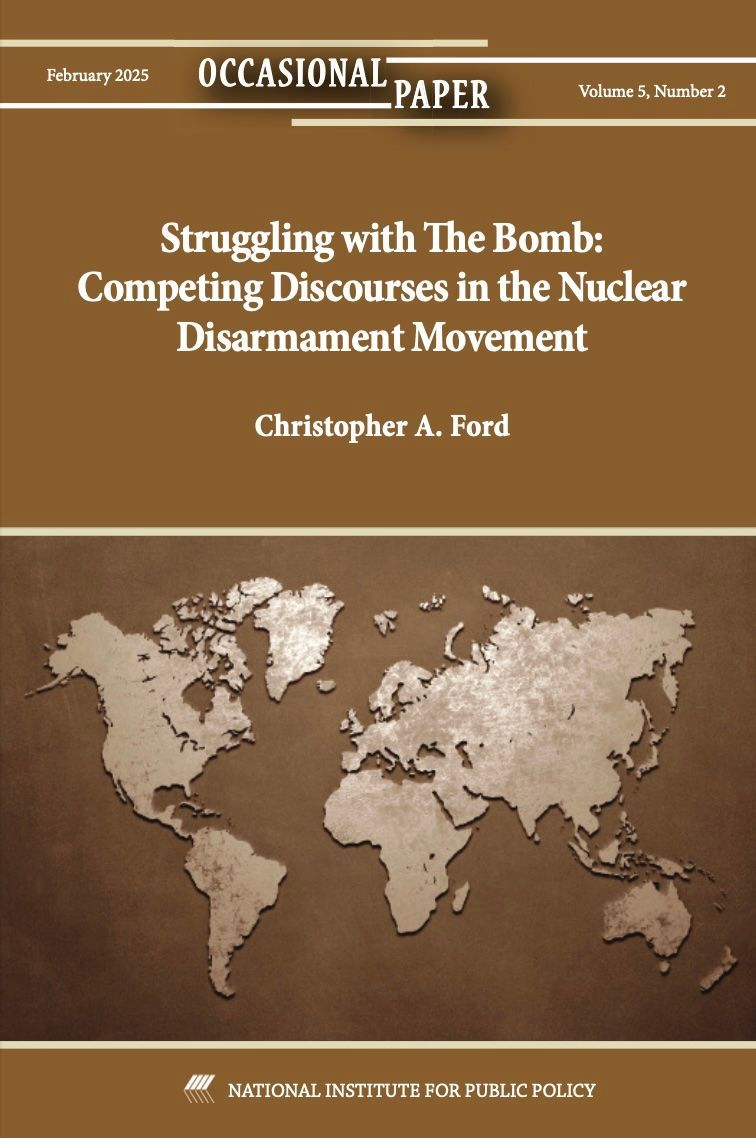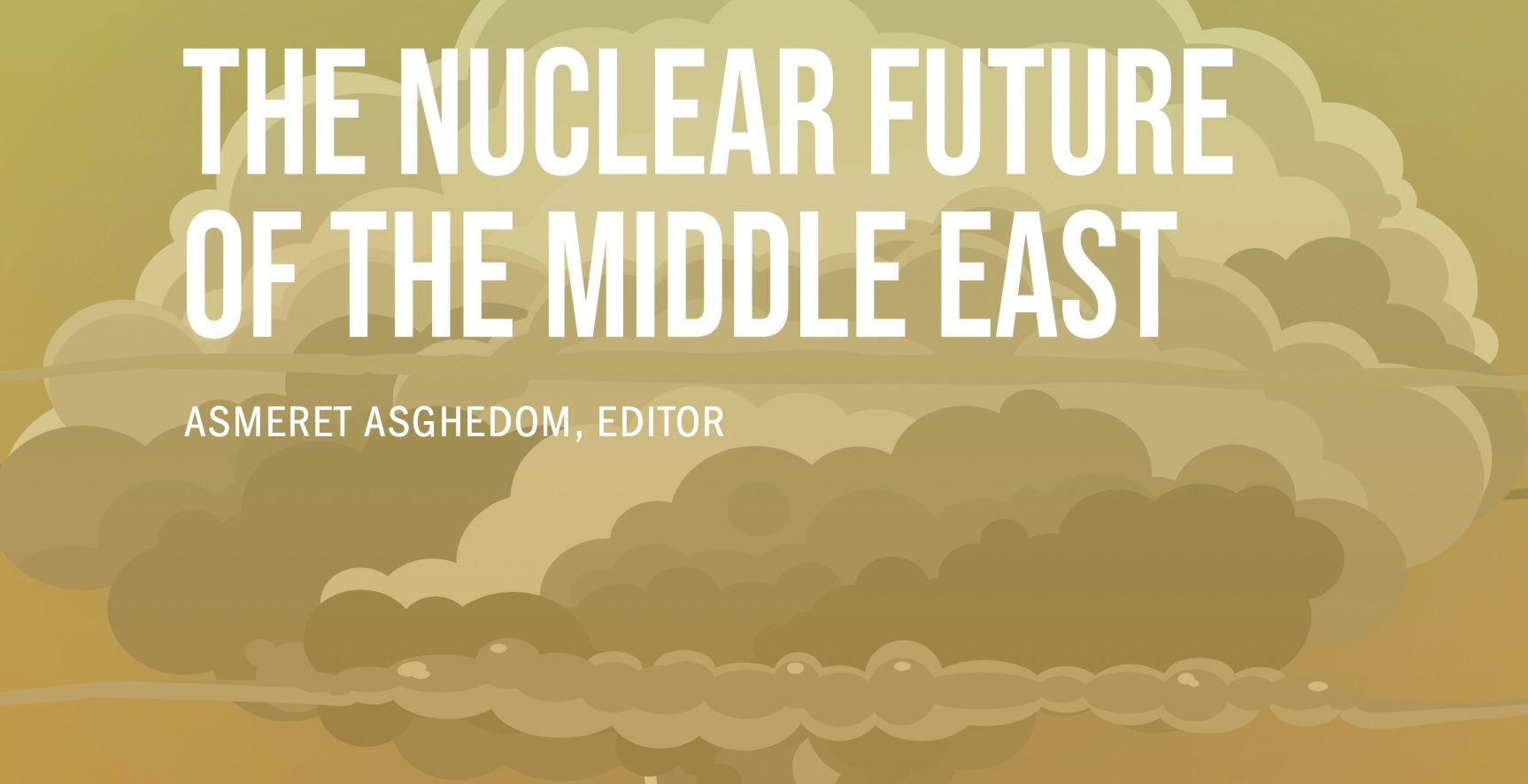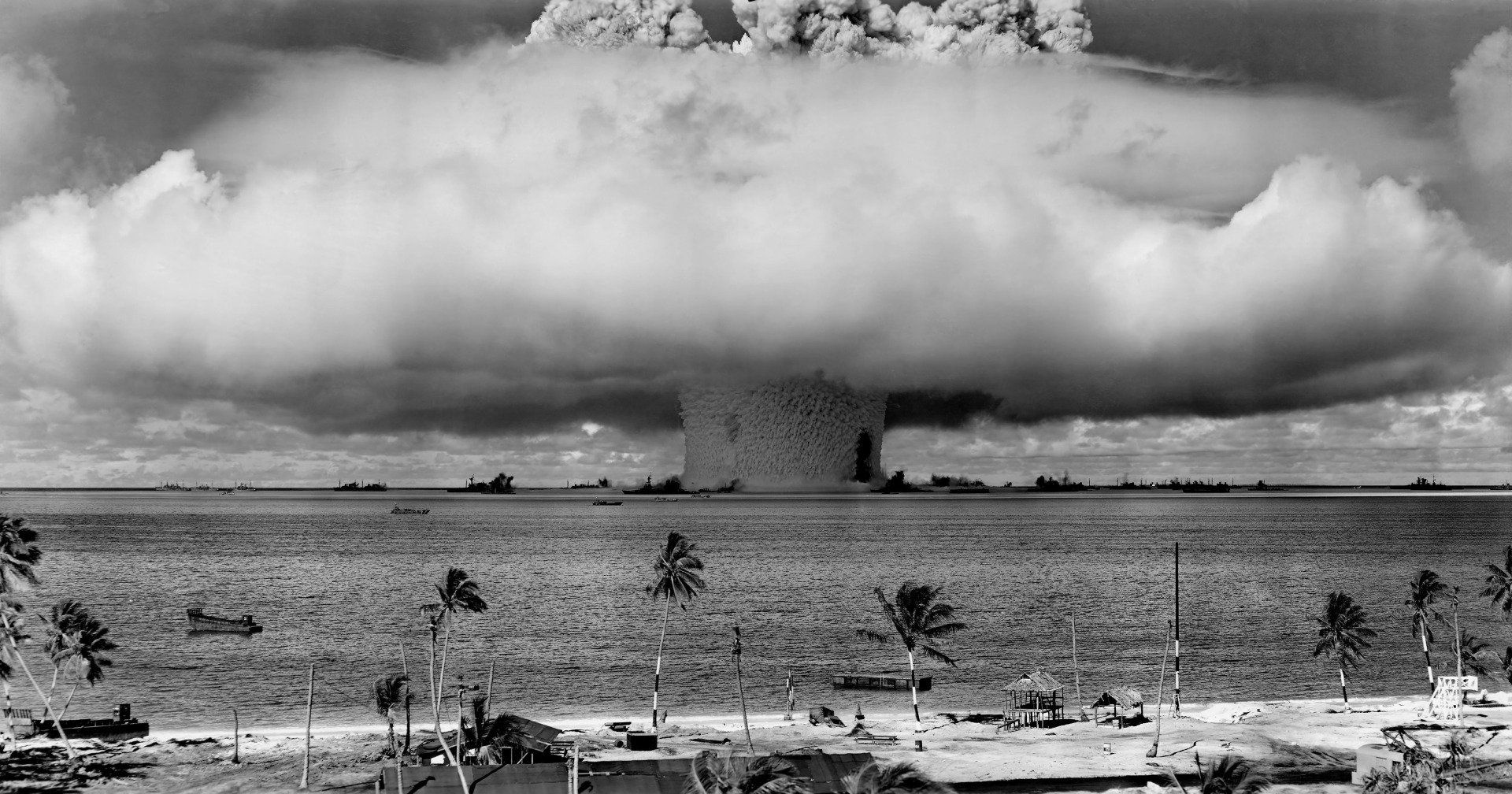The Hon. Christopher A. Ford
New Paradigms Forum -- International Security Policy Since 2009
Guest Blog: Elbridge Colby on “Guiding Principles for the New Nuclear Guidance”
Note:
Elbridge Colby served most recently with the Office of the Secretary of Defense on the “New START” agreement negotiation and ratification effort. Previously, he served as an advisor to the Congressional Strategic Posture Commission and with the Office of the Director of National Intelligence. The views expressed here are his own. As always, NPF readers are invited to provide feedback and comments to Dr. Ford at [email protected].
GUIDING PRINCIPLES FOR THE NEW NUCLEAR GUIDANCE
by Elbridge Colby
Press reports indicate that the Obama Administration has ordered the U.S. nuclear weapons bureaucracy to begin studying whether the U.S. nuclear deterrent can be reduced below the caps imposed by the recently-ratified New START Treaty. Indeed, the Nuclear Posture Review Report of April 2010 suggested this is what the Administration would do. Although the relevant directive is classified, news reports state that it calls for an internal examination of whether U.S. strategic targeting guidance can be modified so as to permit the United States to reduce the number of weapons required by the war plan. This all sounds like the Administration is beginning a review of the key internal documents that provide guidance as to what kinds of things the United States would target in the event of nuclear war, what criteria to use in selecting individual targets, and how many and what types of weapons the United States would employ.
Reviews like this happen periodically and can have a serious impact on the numbers and types of weapons and delivery capabilities the country is seen to need. The reality of the matter today, however, is that relatively incremental changes to the guidance are unlikely to generate big dips in numbers. This is because much of the “fat” of the guidance has probably already been sliced off. Starting with George H.W. Bush’s dramatic cuts at the end of the Cold War, Presidents have been looking for ways to shrink U.S. nuclear forces without compromising the basic ability to annihilate an opponent. Thus, despite two big ratified arms control agreements and a raft of unilateral cuts, the United States still maintains a Triad of delivery systems, hundreds of warheads ready to be launched at a moment’s notice, and thousands of warheads in reserve. Many of these sacrifices have not really affected capability because they were matched by even more dramatic Soviet/Russian cuts. Since the vast bulk of the old U.S. Cold War force posture was designed to attack or survive attacks by Soviet strategic forces, their disappearance made it essentially painless (and actually profitable) to get rid of the extra U.S. capability.
From here on out, however, it will be difficult to wring more juice from this orange. The Russians do not appear particularly interested in further reductions. More importantly, the U.S. may in any case be nearing the floor (at least in terms of deployed weapons) set by traditional deterrence thinking for what we must have to do the kind of “devastating” damage in a second strike that Presidents of both parties have for decades said our safety and strategic stability require, most recently in the course of the New START ratification hearings. Given the size of some of our potential adversaries, the need to ensure effective penetration, the number of alert U.S. forces at any given time, other targets for U.S. strategic forces, the variable cost sensitivity of opposing leaders we may face, and other such criteria, it is perfectly reasonable to think that our current force may be getting close to that standard. Thus the days of major cuts without serious tradeoffs in capability are probably behind us.
Given the President’s commitment to modernizing the Triad and reinvigorating the nuclear weapons complex and the Nuclear Posture Review’s pledge that any further reductions would strengthen deterrence, stability, and assurance, the Administration may not end up seeking to meddle with the traditional formula. To that point, 41 Senators advised the Administration to stick with the tried and true in a letter on March 22, 2011. Yet the Administration does face substantial pressure from the disarmament community both here and abroad to make dramatic moves away from the traditional U.S. posture, and indeed some in the Government appear to be quite sympathetic to such a policy.
This would be a mistake. Instead, the upcoming nuclear targeting review should focus on maintaining a supremely reliable and strong strategic deterrent, even while genuinely looking for ways to prune unnecessary requirements. This review should be guided by the following principles essential to the effective deterrent that the President and Senate have pledged to maintain and modernize:
- Deter aggression against U.S. vital interests: The fundamental, overriding purpose of U.S. strategic forces is to deter aggression against our vital interests. In this light, U.S. forces should be developed and postured to make clear that the United States possesses the capability and the resolve to respond to significant aggression against its core interests, including the security of those nations covered by U.S. nuclear guarantees, by inflicting punishment against the attacker that would vastly outweigh any of his gains. With such a posture, major aggression against the United States and its vital interests is perforce irrational.
- Size and shape forces according to what is needed to deter: U.S. strategic forces should be sized and shaped based on what is needed to deter potential adversaries, not by a pre-determined level set by our own preferences. The potential enemy, in other words, is the one who sets what is needed to deter. But how much is enough? There can be no definitive answer because deterrence is an inherently contextual and variable endeavor. What is enough to deter one man will not necessarily deter another – an Assad is likely more easily deterred than a Hitler. Indeed, what is enough to deter the same man in one situation will not necessarily deter him in another. (Threats that might have deterred Hitler’s move into the Rhineland in 1936, for instance, might not have been enough to deter him from the invasion of France in 1940.) Moreover, different societies and leaderships differ in their hierarchies of value. (The Leninist Soviet Union’s sense of what was most valued, for example, was not merely a reflection of the preferences of the liberal capitalist United States.) Yet all political leaders value something. Determining how much of these valued things need to be held at risk of destruction involves questions of intelligence, capability, morality, and crisis stability, but, in principle, it can only help deterrence for the United States to be able to destroy as much as possible of what is most valued. With such capability, no sane opponent would ever trigger U.S. retaliation. Furthermore, because it is inherently difficult for outsiders to ascertain what it is that opposing leaders most value, it is more prudent for the United States to plan conservatively. Better, in brief, to be safe than sorry. (It is important to note, however, that the capability to destroy these things does not mean the United States would be forced to. Because U.S. forces should continue to have the capability to conduct selective and discriminate strikes, the United States would not be compelled to act on these conservative assumptions.)
- Ability to hold an opponent at risk wherever he goes: The core of deterrence lies in being willing and able to hold at risk of destruction – and, if necessary, to destroy – what an adversary most values. If one’s enemies, however, can make themselves immune to retaliation by burrowing underground or otherwise eluding the reach of American retaliatory strikes, then deterrence is seriously compromised. The United States therefore needs the ability to strike at an opponent wherever he goes. Indeed, the capability to attack elusive targets is particularly important for a more deliberate posture, since the absence of such a capability would place enormous pressure on a U.S. President to act on any perceived opportunity before an opponent is able to flee beyond the reach of U.S. weapons. It is important to note that weapons for attacking underground or other elusive targets need not be nuclear – but nuclear weapons should also not be excluded from consideration if they are the only satisfactory option. [ Note: See Dr. Ford’s related discussion on December 19, 2010: “ Conventional ‘Replacement’ of Nuclear Weapons? ”]
- Assured devastating second strike capability: The United States should maintain the assured ability to conduct a devastating, effectively annihilating strike against any opponent even after an attempt by that opponent to disarm the United States through a first strike of its own. This requirement puts a premium on the survivability of U.S. strategic forces as well as their ability to penetrate enemy defenses and deliver their weapons to target. It also puts heavy emphasis on our command and control systems and procedures to ensure that the National Command Authority can execute a devastating strike under any contingency, even the most stressing. Finally, U.S. forces designated for a second strike should be able to destroy the attacking country as a functioning society. Again, while there is no “right” definition for this standard of destruction, the United States should retain a conservative assessment of what is required. Nations have much ruin in them, as the experience of World War II conclusively demonstrated, and no nation should ever be confused as to the absolute devastation that would follow triggering the full strength of the U.S. deterrent.
- Limited and discriminate options : U.S. deterrence, and especially extended deterrence, is significantly strengthened by the supplementary ability to conduct limited and discriminate strategic strikes. This capability gives the National Command Authority the wherewithal to tailor deterrence and, if necessary, attacks to the situation at hand and thereby avoid the choice of all-out war or inaction while maintaining the capability to conduct full, devastating strikes. The capability to conduct discriminate strikes requires flexible and accommodating planning capacities, responsive and adaptable delivery systems, and supremely reliable command and control assets, as well as additional weapons to ensure the retention of the requisite number of weapons for a full, devastating strike.
- Secure reserve force : The United States should not be left vulnerable after executing a strike, including a major retaliatory strike in which some U.S. assets will have been destroyed or otherwise attrited. U.S. strategic forces should therefore include a secure component that could be withheld even in a worst-case exchange with our primary rival or rivals. This force need not, naturally, be overlarge, but it must be survivable and under the firm control of the National Command Authority.
- Redundancy : The technical requirements for U.S. forces are extremely demanding. Nuclear warheads mounted on ballistic missiles are expected to travel through space, penetrate opposing defenses, and land within dozens of yards of their targets. Bombers need to approach their targets and fire their missiles or drop their ordnance in the face of air defenses, jamming, and other resistance. More prosaically, highly complex nuclear weapons can decay and cease to function appropriately. Technical failure, vigorous defense, and human error are just some of the reasons systems can fail. In this light, U.S. plans need to build in additional forces to ensure the overall effectiveness of the plan. These requirements can be satisfied at lower numbers, however, if modernized delivery systems and weapons with improved reliability can be introduced into the plan.
- Minimize the destabilizing aspects of U.S. forces: The United States has a strong interest in minimizing the destabilizing aspects of U.S. strategic forces, particularly with respect to Russia and China. Because the capabilities and posture of one side’s strategic forces can give the other side reason to fear for the survival and effectiveness of its own strategic capabilities (and vice versa), the anxious side may plan and posture to launch an attack quickly or automatically in the event of a crisis in order to ensure retaliation. This benefits no one. U.S. strategic forces, which are the world’s most sophisticated, can generate these kinds of fears. While U.S. forces need to be highly effective and reliable, the United States should look for ways to meet these objectives while minimizing the degree to which our forces and posture encourage other countries to adopt “hair-trigger” or otherwise less deliberate postures.
There are a few principles that are conspicuous by their absence from this list. Preeminently, the Administration’s nuclear guidance review should not privilege the goal of lowering numbers per se. The United States should develop and maintain the delivery systems and warheads necessary to deter potential adversaries from major aggression – no more, no less. The flip side is also true. While there are political benefits to maintaining some broad degree of “essential equivalence” with Russia, there is no objective military need for U.S. forces to match Moscow’s in number or type – we have our own set of targets, they have theirs. As long as our forces can fulfill their missions, their numerical relation to Russia’s is immaterial.
Strategic deterrence remains the cornerstone of U.S. security, and that strategic deterrence is best maintained by abiding by the principles laid out above. If we follow them, security threats to the United States will remain serious but contained. If we do not, we open ourselves to threats far graver than we imagine today.
-- Elbridge Colby



Copyright Dr. Christopher Ford All Rights Reserved





